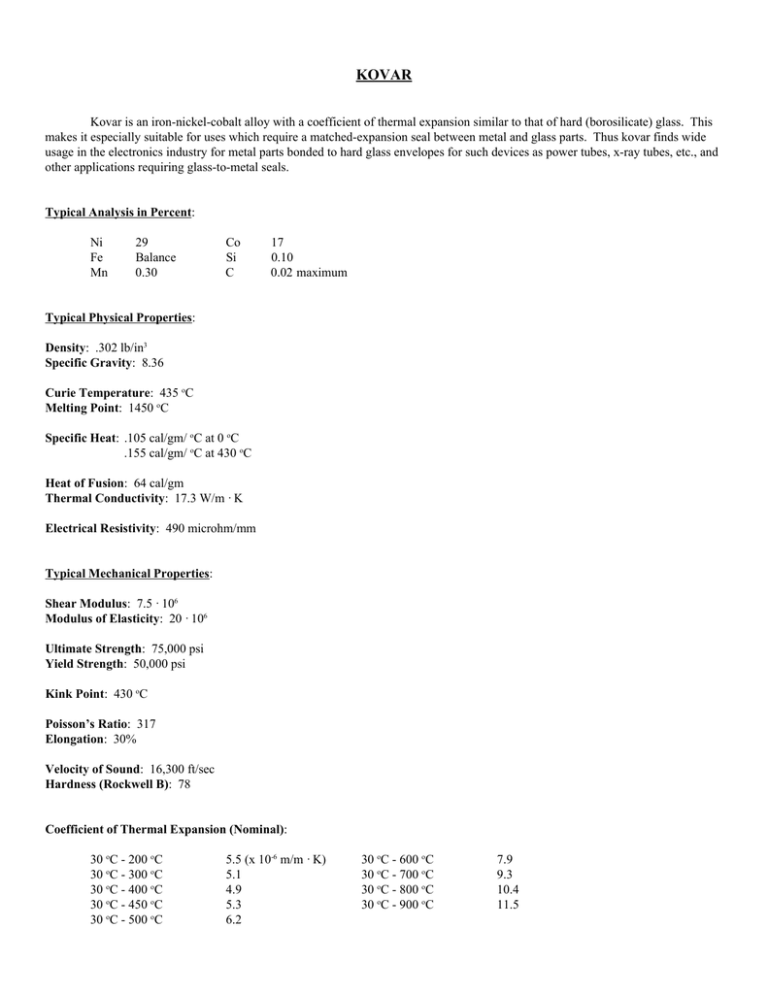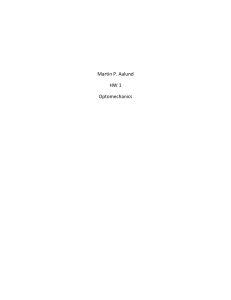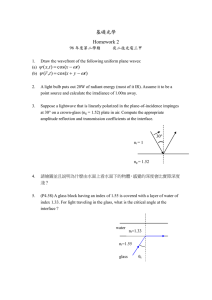Kovar is an iron-nickel-cobalt alloy with a coefficient of thermal
advertisement

KOVAR Kovar is an iron-nickel-cobalt alloy with a coefficient of thermal expansion similar to that of hard (borosilicate) glass. This makes it especially suitable for uses which require a matched-expansion seal between metal and glass parts. Thus kovar finds wide usage in the electronics industry for metal parts bonded to hard glass envelopes for such devices as power tubes, x-ray tubes, etc., and other applications requiring glass-to-metal seals. Typical Analysis in Percent: Ni Fe Mn 29 Balance 0.30 Co Si C 17 0.10 0.02 maximum Typical Physical Properties: Density: .302 lb/in3 Specific Gravity: 8.36 Curie Temperature: 435 oC Melting Point: 1450 oC Specific Heat: .105 cal/gm/ oC at 0 oC .155 cal/gm/ oC at 430 oC Heat of Fusion: 64 cal/gm Thermal Conductivity: 17.3 W/m · K Electrical Resistivity: 490 microhm/mm Typical Mechanical Properties: Shear Modulus: 7.5 · 106 Modulus of Elasticity: 20 · 106 Ultimate Strength: 75,000 psi Yield Strength: 50,000 psi Kink Point: 430 oC Poisson’s Ratio: 317 Elongation: 30% Velocity of Sound: 16,300 ft/sec Hardness (Rockwell B): 78 Coefficient of Thermal Expansion (Nominal): 30 oC - 200 oC 30 oC - 300 oC 30 oC - 400 oC 30 oC - 450 oC 30 oC - 500 oC 5.5 (x 10-6 m/m · K) 5.1 4.9 5.3 6.2 30 oC - 600 oC 30 oC - 700 oC 30 oC - 800 oC 30 oC - 900 oC 7.9 9.3 10.4 11.5 Heat Treatment: Because of its effect on the actual structure of the material, there is a distinction made between heat treating the material to facilitate fabrication and heat treating the material to insure optimum conditions for glass sealing, plating or brazing. Stress Relief Annealing: To relieve stress and work hardening of parts at intermediate stages of fabrication. It is intended particularly for drawing, forming and spinning operations. 1. Wash and degrease parts. 2. Anneal in atmosphere controlled furnace. Atmosphere may be wet or dry hydrogen, dissociated ammonia, cracked gas or similar neutral atmosphere. 3. Annealing temperature is not critical; however, high temperatures (greater than 900 oC) or extended time periods (longer than 60 minutes) should be avoided because such treatments promote grain growth. Typical cycle: 850 oC for 30 minutes. 4. Parts should be held at temperature for the indicated time and then furnace cooled to less than 175 oC to avoid oxidation and/ or thermal shock (which may cause distortion). Heat Treatment for Oxidation: 1. Make sure that proper methods are used to clean, degrease and bright dip parts. 2. Oxidation - Heat treat in an electric air furnace to 850 oC to 900 oC until parts are cherry red (dull red heat). The length of heat cycle is approximately 3 minutes, but due to differences in humidity and furnaces, the proper cycle has to be varied. Then reduce heat approximately 10 oC per minute. When parts are cooled, oxide will be formed. The oxide may appear from light grey to black in color. Black is normally considered to be over oxidation and is not necessarily desirable for a good glass to metal seal.


